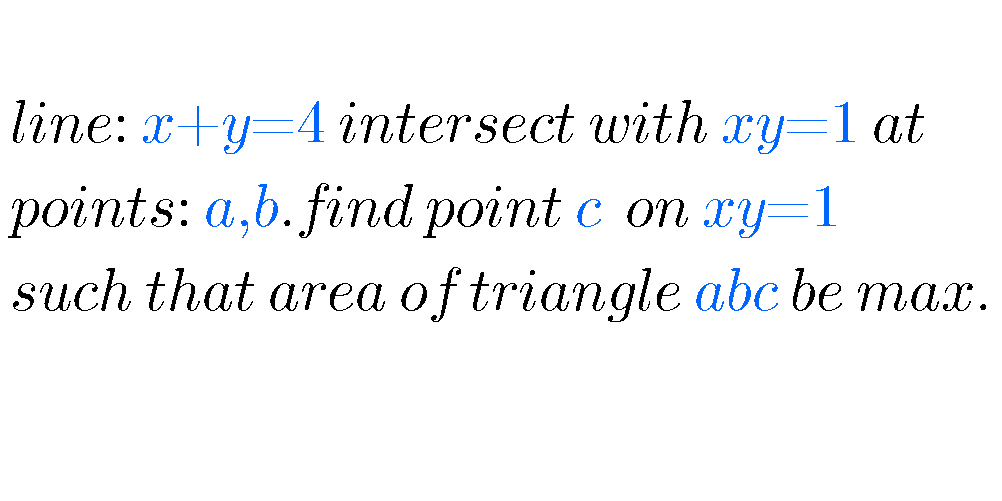
AllQuestion and Answers: Page 1966
Question Number 11766 Answers: 1 Comments: 0
Question Number 11764 Answers: 1 Comments: 0
Question Number 11759 Answers: 1 Comments: 0
Question Number 11791 Answers: 1 Comments: 0
Question Number 11754 Answers: 1 Comments: 0
Question Number 11753 Answers: 2 Comments: 0
Question Number 11751 Answers: 1 Comments: 0
$$\mathrm{Simplify}:\:\mathrm{sin}\left(\mathrm{6}\theta\right) \\ $$
Question Number 11748 Answers: 1 Comments: 0
Question Number 11743 Answers: 1 Comments: 0
$$\mathrm{9}/\mathrm{3}\left(\mathrm{6}×\mathrm{4}/\mathrm{8}\right)=? \\ $$
Question Number 11744 Answers: 1 Comments: 0
Question Number 11741 Answers: 1 Comments: 0
$$\int\mathrm{xtan}^{\mathrm{2}} \:\mathrm{x}\:\mathrm{dx}=? \\ $$
Question Number 11740 Answers: 0 Comments: 0
Question Number 11737 Answers: 1 Comments: 0
$$\int\:\frac{\mathrm{1}}{{x}\left({x}^{{n}} +\mathrm{1}\right)}\:{dx}\:= \\ $$
Question Number 11732 Answers: 1 Comments: 0
Question Number 11714 Answers: 0 Comments: 3
Question Number 11707 Answers: 0 Comments: 0
Question Number 11701 Answers: 2 Comments: 3
Question Number 11781 Answers: 3 Comments: 0
Question Number 11695 Answers: 2 Comments: 4

Question Number 11672 Answers: 2 Comments: 3
Question Number 11664 Answers: 2 Comments: 1
Question Number 11661 Answers: 1 Comments: 0
Question Number 11660 Answers: 0 Comments: 0
$$ \\ $$$$ \\ $$$$ \\ $$$$\:\:\:{Evaluate}\:\:\int{x}^{{x}} {dx} \\ $$$$ \\ $$$$ \\ $$$$ \\ $$
Question Number 11653 Answers: 0 Comments: 0
Question Number 11648 Answers: 1 Comments: 0
Question Number 11633 Answers: 1 Comments: 0
Pg 1961 Pg 1962 Pg 1963 Pg 1964 Pg 1965 Pg 1966 Pg 1967 Pg 1968 Pg 1969 Pg 1970
